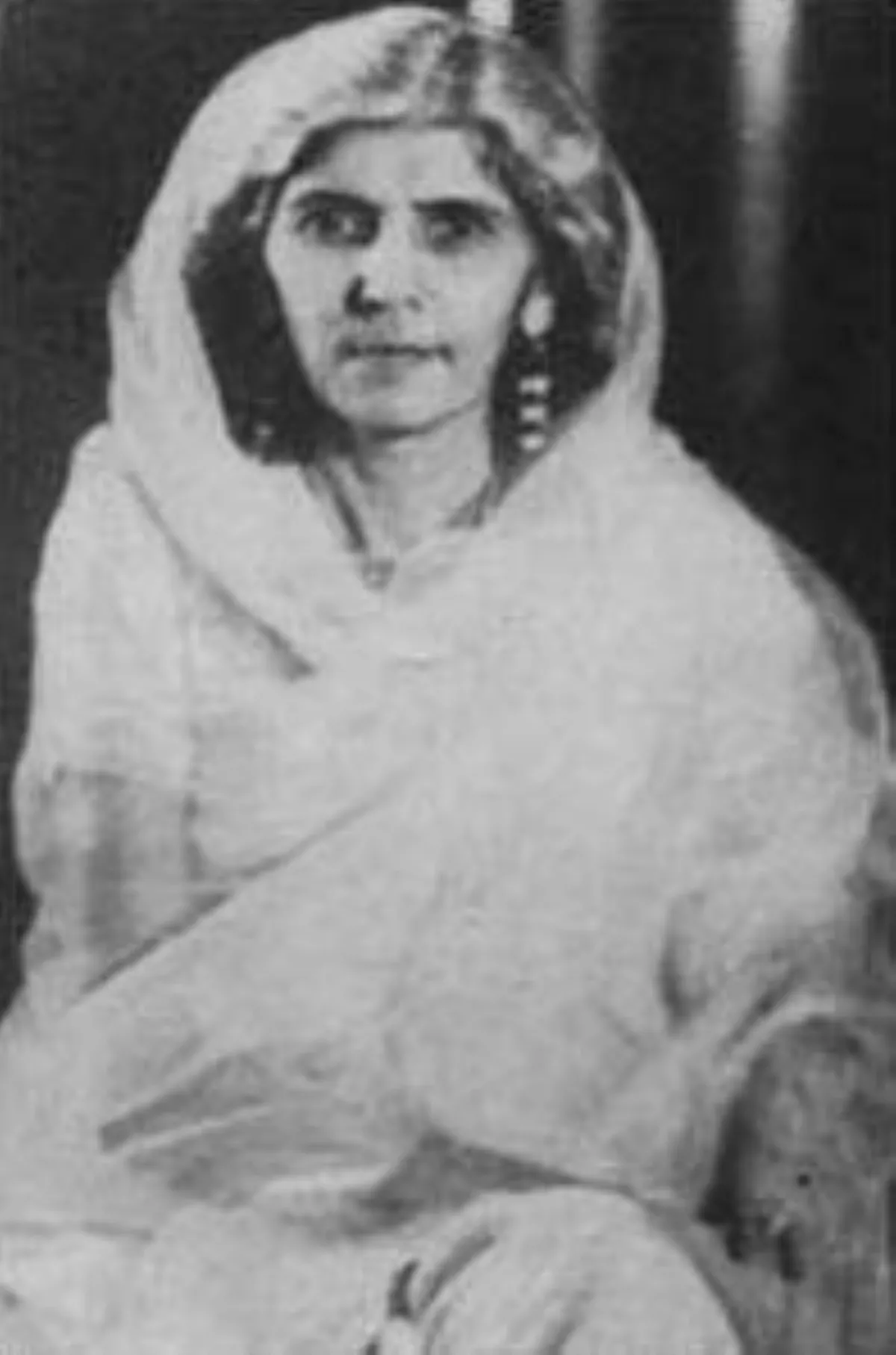 1.
1. Fatima Jinnah was a Pakistani politician, stateswoman, author, and activist.

 1.
1. Fatima Jinnah was a Pakistani politician, stateswoman, author, and activist.
Fatima Jinnah was the younger sister of Muhammad Ali Jinnah, the founder and first Governor-General of Pakistan.
Fatima Jinnah served as the Leader of the Opposition of Pakistan from 1960 until her death in 1967.
Fatima Jinnah was a close associate and adviser to her brother, Muhammad Ali Jinnah.
Fatima Jinnah remained the closest confidant of her brother until his death.
Fatima Jinnah wrote the book My Brother in 1955, but it was only published 32 years later, in 1987.
Fatima Jinnah's legacy is associated with her support for civil rights.
Fatima Jinnah is commonly known as Madar-e-Millat, and Khatun-e-Pakistan, many institutions and public spaces in Pakistan have been named in her honour.
Fatima Jinnah joined the Bandra Convent in Bombay in 1902.
Fatima Jinnah lived with her brother until 1918, when he married Rattanbai Petit.
Fatima Jinnah accompanied her brother to every public appearance that he made.
Fatima Jinnah travelled to London, England in 1930, returned to Bombay for a year, and then went back to England in 1931, where she lived for four years.
Fatima Jinnah supported the Two-nation theory, which subsequently played a crucial role in the creation of Pakistan in 1947.
On 11 August 1947, Fatima Jinnah attended the first session of the Constituent Assembly of Pakistan from the visitor's gallery, symbolising her unwavering support for Muhammad Ali, who was elected its president.
Fatima Jinnah played a significant role in the settlement of Muhajirs in the new state of Pakistan.
Fatima Jinnah played a significant role in mobilising Muslim women during the Pakistan Movement.
Fatima Jinnah urged the Muslim women to join in the Pakistan Movement.
Fatima Jinnah was leading a movement that brought thousands of women into the fold of the Muslim League; the movement came to be termed as women's movement.
The women's movement was started by Fatima Jinnah; she trained women for the forthcoming challenges and provided them training of National Guards, first aid training, etc.
In 1949, during a visit to the North-West Frontier Province, where provincialism and separatist sentiments had long been a concern, Fatima Jinnah addressed a public gathering in Peshawar.
Fatima Jinnah highlighted "sectarianism" and "provincialism" as key obstacles to Pakistan's progress, calling for their eradication.
Fatima Jinnah encouraged them to reorganize and revitalize the Muslim League, emphasizing its historic foundation in Dacca in 1906.
Fatima Jinnah publicly endorsed the Muslim League for the first time during the 1954 provincial elections in East Bengal.
Fatima Jinnah toured the region, urging people to vote for the party.
In 1954, following the rout of the Muslim League in East Bengal's provincial elections, numerous appeals emerged urging Fatima Jinnah to assume a leadership role.
Several women from the newly formed Provincial Assembly of West Pakistan, including Jahanara Shahnawaz, wrote to Fatima Jinnah requesting her to accept the presidency of the Pakistan Muslim League, with support from Muslim League chapters such as in Rahim Yar Khan.
Additionally, a man from Lahore suggested Fatima Jinnah organize a new party, criticizing the failure of existing political parties.
Fatima Jinnah's train, called the Freedom Special, was 22 hours late because men at each station pulled the emergency cord, and begged her to speak.
Fatima Jinnah narrowly lost the election, winning a majority in some provinces.
Fatima Jinnah, popularly acclaimed as the Madr-e-Millat, or Mother of the Nation for her role in the Freedom Movement, contested the 1965 elections at the age of 71.
The electoral landscape changed when Fatima Jinnah decided to contest the elections for the president's office in 1965.
Fatima Jinnah was challenging the dictator and self-proclaimed "president" Ayub in the indirect election, which Ayub had himself instituted.
Fatima Jinnah utilized the state facilities as head of state, not as the President of the Convention Muslim League or a presidential candidate, and did not hesitate to legislate on electoral matters.
Fatima Jinnah had detached herself from the political conflicts that had plagued Pakistan after the founder's death.
Fatima Jinnah drew enormous crowds in all cities of East and West Pakistan.
Fatima Jinnah was backed by a consortium of political parties and won two of Pakistan's largest cities, Karachi and Dhaka.
The US magazine, Time, while reporting on the 1965 election campaign, wrote that Fatima Jinnah faced attacks on her modesty and patriotism by Ayub and his allies.
Fatima Jinnah won the popular vote in the presidential election of 1965.
Fatima Jinnah is buried next to her brother, Muhammad Ali Jinnah, at Mazar-e-Quaid, Karachi.
Fatima Jinnah remained extremely popular and is considered one of the greatest female figures Pakistan has produced.
Fatima Jinnah is a source of the awakening of women's rights.
In Pakistan, she rose to stand as Pakistan's national symbol, and unlike Ayub Khan who died in poor health and yet no honours were given him, Fatima Jinnah received tremendous honours from the society after her death.